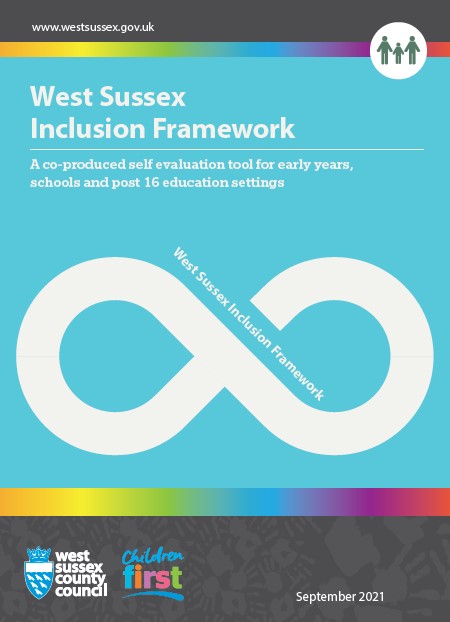
West Sussex Inclusion Framework September 2021 doc
Is there evidence that…
- The school shows evidence of preparing for the inclusion of a wide range of individual children and young people.
- Children/young people who are experiencing barriers to learning and participation are viewed as individuals with different interests, knowledge and skills.
- The school outlines the arrangements for and identifies and assesses children/young people in order to provide additional and different provision to meet individual needs.
Discussion prompts / evidence of impact
- Staff can describe how policies are adapted to meet the different needs of children/young people. For example, reasonable adjustments are made for applying sanctions or different lunchtime arrangements for some children/young people.
- The school tracks the language acquisition of children/young people, including English proficiency of English as an additional language (EAL) students in order to effectively support their further acquisition of English.
- The school makes excellent use of the graduated approach and there is a clear audit trail for the use of the ‘assess, plan, do, review’ cycle to secure progress.
- Children/young people and their families are consistently and effectively involved in every stage of the ‘assess ‘plan, do, review’ cycle (graduated approach) and understand why an intervention is being used, how the curriculum has been adapted, and the impact this has made. For children/young people with an Education, Health and Care Plan (EHCP), this is also captured as part of the Annual Review cycle.
- Regular reviews with children/young people with special education needs and disabilities (SEND), additional needs and those at risk of disadvantage show they are really being listened to and acted upon, their needs are being met and significant progress is being made. The setting obtains information to support this directly from the parent and child/young person on their strengths, interests, needs and emotional well-being.
- Where children/young people are at risk of permanent exclusion there is evidence that their voice and views are listened to and acted upon – e.g. case studies.
- Individual provision maps, or similar alternatives, have been developed in consultation with children/young people and parents and clearly identify a wide range of strategies to support independent learning. These plans have a sharp focus on evaluating the impact of provision and support.
- Provision and planning are in place to promote the progress of more able students (those working above national expectations) and considers any factors which may place them at a disadvantage.
- Appropriate additional support is targeted at certain children/young people within lessons from well-trained, confident staff, taking account of any advice from other agencies, e.g. Ethnic Minority and Travellers Achievement Service (EMTAS), Educational Psychology Service (EPS), Learning Behaviour Advisory Team (LBAT), Autism and Social Communication Team (ASCT), Early Help. School involves outside agencies to further support children/young people and parents and know what is implemented and where appropriate, are part of the review.
- Communications regularly signpost parents to the Local Offer for relevant information, support and advice and use it to access additional support and services.
- The special educational needs co-ordinator (SENCO) meets with all relevant staff each term to review their provision for SEND children. The SENCO is available by appointment to meet with staff and parents to discuss a child/young person’s SEND or possible SEND.
- The school proactively identifies cohorts or individual child/young person who could benefit from a programme of alternative provision which takes place in and / or out of school. The provision is designed to ensure clear outcomes are planned and evaluated for impact with seamless reintegration.
Last updated 3 March 2022
 Tools for Schools
Tools for Schools